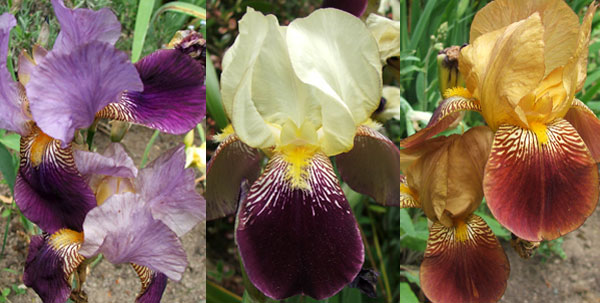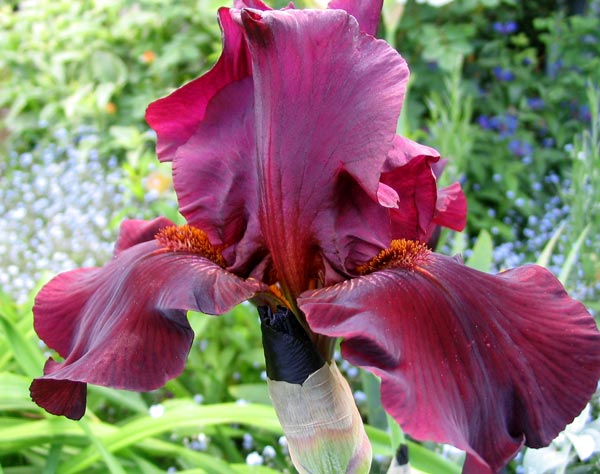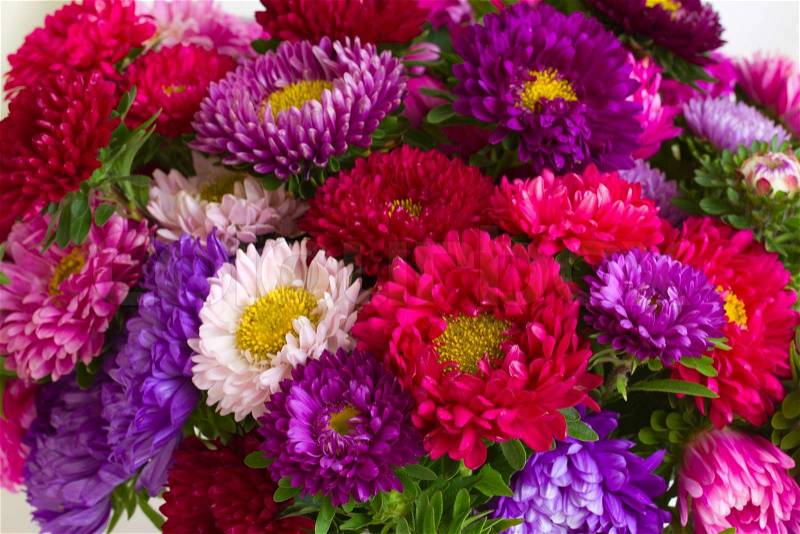Cinnamon Curls Coralbells
Name: Heuchera 'Cinnamon Curls'
Zones: 4–9
Source: Proven Winners
Layer on the color in your shade border with ‘Cracked Ice’ heucherella. This hardy perennial has showy, finely cut, purple foliage with a silvery-pink overlay. In spring and summer it’s also crowned with small white blooms. ‘Cracked Ice’ is a mounding plant that looks terrific planted next to ‘Buttered Rum’ heucherella.
Name: Heucheralla ‘Cracked Ice’
Growing Conditions: Shade, Part shade
Size: 7–10 inches tall, 12–15 inches wide
Zones: 4–9


The first time we saw 'Cinnamon Curls' coralbells, we knew it would be a standout in our Test Garden. That's because it has rich reddish-bronze foliage that's beautifully curled and wavy. We grew 'Cinnamon Curls' in the ground and in containers; it performed exceptionally well in both situations. In midsummer, the plants send up spikes of small, bell-shape white flowers.
Growing conditions: Shade, Partial shade
Size: 8–12 inches tall, 12–16 inches wideZones: 4–9
Source: Proven Winners
 |
Cinnamon Curls Coralbells
Carnival Fall Festival Coralbells
Put a little magic in your shade garden with ‘Fall Festival’ coralbells. This easy-care perennial develops masses of pinkish leaves with a light silver overlay. ‘Fall Festival’ forms a tight mound that works well in pots and planters or as an edging plant in the shade border. It’s also heat- and drought-resistant.
Name: Heuchera ‘Fall Festival’Growing Conditions: Shade, Partial shade
Size: 10–12 inches tall, 12–14 inches wide
Zones: 4–9Source: Ball Hort  |
Carnival Fall Festival Coralbells
Cracked Ice Heucherella
Name: Heucheralla ‘Cracked Ice’
Growing Conditions: Shade, Part shade
Size: 7–10 inches tall, 12–15 inches wide
Zones: 4–9
Source: Terra Nova
Shooting Star Hellebore
Blooming from February to April, ‘Shooting Star’ hellebore develops masses of creamy-white flowers with pink reverses. As each bloom matures it becomes slightly pinker, so over time individual plants will carry a bouquet of different shades. ‘Shooting Star’ also has red stems and dark evergreen foliage. Like other hellebores, it’s deer- resistant and reliably hardy.
Name: Helleborus x ericsmithii ‘Shooting Star’
Growing Conditions: Shade, Partial shade
Size: 18–22 inches tall, 20–24 inches wide
Zones: 5–9
Source: Skagit Gardens

Amore Pink Bleeding Heart
Some plants just seem to be in almost constant bloom. That's the case with 'Amore Pink' bleeding heart. This little workhorse sends up stalks of cotton candy pink flowers from May until August. It also forms tight mounds of blue-green foliage that look good even when the plant takes a quick break from flowering. Use 'Amore Pink' along the edge of a shaded garden path or mix it with other spring bloomers in pots and planters.
Name: Dicentra 'Amore Pink'
Growing Conditions: Partial Shade, shade
Size: 9–12 inches tall, 12–14 inches wide
Zones: 5–9
Source: Terra Nova

Amore Pink Bleeding Heart





























